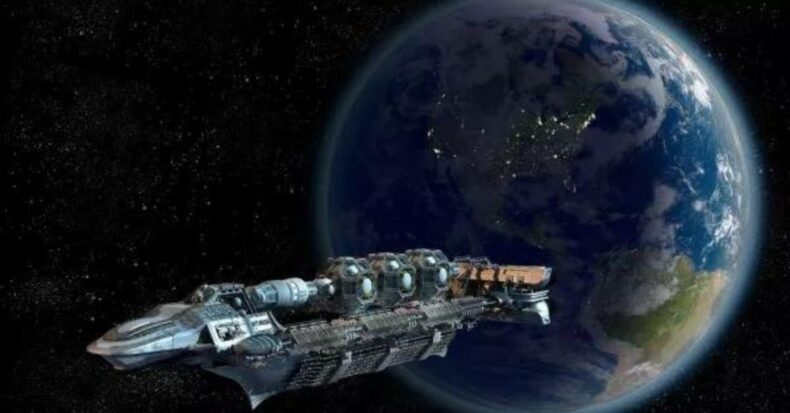
Three astronauts will go on a six-month mission to construct country’s space station
China successfully launched a mission on Sunday to complete the construction of China’s space station. China appointed three astronauts for the mission who went on a six-month mission for the construction.
The Shenzhou-14 spacecraft carried the astronauts who will coordinate with the ground team. It will be to complete the development of Tiangong Space Station. They will transform it into a three-module national space laboratory from single-module structure currently. The three modules will be the core module, Tianhe and two lab module – Wentian and Mengtian.
The spacecraft carried astronauts Chen Dong, Liu Yang, and Cai Xuzhe. It took off from the Jiuquan Satellite Launch Center in northwest China. Minutes later, a ground control official declared the mission a huge success. It stated that the spacecraft had reached its intended orbit.
The spacecraft is expected to arrive at the under-construction space station in about seven hours. The station will be in low-Earth orbit at a height of 340 to 450 kilometers. According to Chinese state media, it will have a 10-year lifespan once completed. But experts believe it could last up to 15 years with proper maintenance and repairs.
“About 577 seconds after the launch, Shenzhou 14 separated from the rocket and entered its designated orbit. The crew members are in good shape and the launch is a complete success,” an official news agency Xinhua report said, quoting the China Manned Space Agency.
Lin Xiqiang, deputy director of the CMSA, said at a press conference on Saturday that the crew on Shenzhou 14 will work with the ground team to complete the rendezvous with Tiangong, followed by docking and transposing the two lab modules with the core module.
China will be only country with its own space station:
China will be the only country with a space station once it is completed. The Russian International Space Station (ISS) is a joint project of several countries. The China Space Station (CSS) is also expected to compete with Russia’s ISS.
CSS may become the sole space station to remain in orbit once the ISS retires in the coming years. China unveiled an ambitious plan for its burgeoning space industry in February. It includes over 50 space launches and six manned space flights to complete the construction of its space station.
According to the China Aerospace Science and Technology Corporation (CASC), China will conduct more than 50 space launches in 2022, launching over 140 spacecraft into orbit.
Chen, who will command the new mission, was a crew member on the Shenzhou-11 mission, Liu was on the Shenzhou-9 mission, and Cai is a first-time spaceflight crew member. Lin Xiqiang, deputy director of the CMSA, stated at the Jiuquan Satellite Launch Centre press conference. The trio will stay in orbit for six months, Lin said.
Started manned space program in 1992:
China began its manned space program in 1992, according to official media. The first step was to send astronauts into space and ensure their safe return. The mission was completed with the launches of Shenzhou 5 in 2003 and Shenzhou 6 in 2005.
The next step was to put key technologies for a permanent space station to the test, such as extra-vehicular activity, orbital docking, and in-orbit propellant refueling. The third step will be to build and operate a permanently crewed space station, which will set a new standard for Chinese space technology.
“China has so far launched more than a dozen manned spacecraft, one cargo spacecraft, Tiangong-1 and Tiangong-2, sent more than 11 astronauts into space and completed the first two steps of the manned space program,” the Xinhua news agency reported.
CSS may become the sole space station to remain in orbit once the ISS retires in the coming years, according to observers.
With the launch of Tianhe, the first and largest of the station’s three modules, China began construction of its three-module space station in April 2021.
Read More- In 2024, China plans to build a massive space telescope to study far-off galaxies













